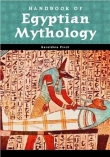
Текст книги "The Arabs: A History"
Автор книги: Eugene Rogan
Жанры:
Военная история
,сообщить о нарушении
Текущая страница: 29 (всего у книги 47 страниц)
In the decade since the Suez Crisis, Israel and its Arab neighbors had been engaged in an arms race in preparation for the inevitable next round of war. The United States began to overtake France as the primary source of military hardware for Israel, Britain supplied the Jordanians, and the Soviets armed Syria and Egypt. The Soviets were not above using their position in Egypt and Syria to pressure their rival, the United States, in an area of strategic interest to both superpowers. War was inevitable because Israel and the surrounding Arab states were dissatisfied with the status quo and unwilling to consider peace on the basis of the status quo. The Arabs were so unreconciled to Israel that they refused to refer to the country by name, preferring to speak of “the Zionist entity.” Having lost wars to the Israeli army in 1948 and 1956, the Arabs were determined to settle the score. The Palestinian refugees in Lebanon, Syria, Jordan, and the Gaza Strip served as a daily reminder of the Arabs’ failure to live up to their promises to liberate Palestine. The Israelis were also intent on war. They feared that the country’s narrow waist between the coastline and the West Bank—at points only 7.5 miles, or 12 kilometers, wide—left Israel vulnerable to a hostile thrust dividing the north from the south of the country. In addition, the Israelis had no access to the Western Wall and the Jewish Quarter of the old city of Jerusalem, which remained in Jordanian hands. And Syria held the strategic Golan Heights overlooking the Galilee. Moreover, the Israelis believed that their strategic advantage—holding more and better quality weapons than their Arab neighbors—would diminish over time as the Soviets provided weapons systems of the latest technology to the Egyptians and Syrians. The Israelis needed one good war to secure defensible boundaries and inflict a decisive defeat on the Arabs to impose peace on terms with which Israel could live. In the spring of 1967 the Israelis began to complain of Palestinian infiltrators crossing from Syria to attack Israel, and tensions between the two countries escalated rapidly. The Israelis and Syrians put their armed forces on alert. Prime Minister Levi Eshkol threatened offensive action against Damascus if the Syrian provocations did not stop. Threats gave way to hostilities in April, when Israeli jets engaged the Syrian air force in dogfights over Syrian airspace. The Israeli air force downed six Syrian MiG fighters. Two of the planes crashed in the suburbs of Damascus. As Egyptian journalist Mohamed Heikal recalled, “The situation between Syria and Israel became very dangerous.” 19 The sudden escalation of hostilities placed the whole region on a war footing. At this moment of heightened tension, the Soviet Union chose to leak a false intelligence report to the Egyptian authorities alleging a massing of Israeli troops on the Syrian frontier. The Soviets no doubt were smarting from the ease with which the Israelis with their French Mirage fighters had downed the state-of-the-art MiG 21s the USSR had provided the Syrian air force. Egypt had a mutual defense pact with the Syrians, which meant that if the Israelis initiated hostilities with Syria, Egypt would have to go to war. Perhaps the Soviets hoped to mobilize the Egyptians with false intelligence and contain the Israelis with the prospect of a two-front conflict. Although Nasser was in possession of good intelligence, including aerial photographs, suggesting that the Israelis were not in fact mobilizing on the Syrian frontier, he continued to act publicly as though there were an imminent threat of war. Perhaps Nasser hoped to claim a victory over Israel without having to fire a shot: first, by circulating the Soviet intelligence of an Israeli threat to Syria, then by deploying his troops to the Israeli frontiers as a deterrent, subsequently claiming the absence of Israeli troops on the Syrian frontier as proof the Israelis had withdrawn in the face of Egyptian pressure. Whatever his reasoning, Nasser continued to act on the basis of the false Soviet intelligence and ordered his army across the Suez Canal on May 16 to mass in the Sinai near the Israeli frontier. This miscalculation would prove the initial step to war. The first challenge Nasser faced was to mount a credible threat to the Israelis. With 50,000 of his best troops still tied down in the Yemen War, Nasser was forced to call up all his reservists to muster the necessary manpower. He needed to make his soldiers appear more formidable than they actually were, both to generate enthusiasm among the Egyptian people and to pose a credible threat to the Israelis. Nasser gave his troop deployment a dramatic twist by parading soldiers and tanks through central Cairo for the benefit of the cheering crowds and the international press. “Our troops were deliberately marched through the streets of Cairo on their way to Sinai,” General Abd al-Ghani al-Gamasy complained, “in full view and for all to see—citizens and foreigners alike. The mass media covered these movements, contrary to all principles and measures of security.”20 The constant stream of soldiers to the front raised public expectations of an imminent war that might redeem Arab honor and liberate Palestine. None of Nasser’s millions of supporters doubted for a moment that the Egyptian army would lead its Arab allies to victory over Israel. However, the Egyptian forces were sent into the Sinai with no clear military objective, as though their sheer mass would intimidate the Israelis. Meanwhile, al-Gamasy reflected, “Israel quietly prepared for war under optimal circumstances.” Its strategists had full knowledge of the numbers and equipment of the Egyptian deployment. Not only had they spent the previous months gathering detailed intelligence, but they had seen it all on TV. When the Egyptian units reached the Sinai, they came face-to-face with the United Nations Emergency Force. The UNEF had been posted to the Sinai in the aftermath of the 1956 Suez War to keep the peace between Egypt and Israel. It was comprised of 4,500 international soldiers posted to forty-one observation points in the Gaza Strip, along the Israeli-Egyptian frontier, and at Sharm al-Shaykh at the southern tip of the Sinai. The UN forces were now an inconvenience, coming between the Egyptian troops and the Israeli frontiers. How could the Egyptian army pose a credible threat to the Israelis so long as there was a buffer force between them? The Egyptian chief of staff wrote to the commander of the UNEF to request the withdrawal of UN troops from the eastern frontiers between Egypt and Israel. The UN commander relayed the request to the secretary-general, U Thant, who responded that it was within Egypt’s sovereign rights to request the withdrawal of UN troops from its territory, but that he would only approve a total withdrawal of UN forces. The UNEF, U Thant argued, was an integral unit, and it made no sense to withdraw part of the force from the eastern frontier while preserving peacekeepers in the Gaza Strip and the Strait of Tiran. Egypt reflected on the secretary-general’s response and, on May 18, requested a total pullout of all UN troops from the Sinai. The last UNEF unit withdrew on May 31. Suddenly there was no buffer between the Egyptians and Israelis at all, heightening tensions between the two countries to fever pitch. This was Nasser’s second miscalculation, which took him much closer to war. The withdrawal of UN forces created an unforeseen diplomatic problem for Nasser. Since 1957 the UN had kept the Strait of Tiran open to all shipping, regardless of the flag or destination of vessels. This had given Israel a decade of free access to the Red Sea from its port of Eilat. Once the UN had been withdrawn, the strait returned to Egyptian sovereignty. Egypt came under tremendous pressure from its Arab neighbors to close the strait to all Israeli shipping, as well as to vessels destined for Eilat. As Anwar Sadat recalled, “Many Arab brothers criticized Egypt for leaving the Tiran Strait . . . open to international, particularly Israeli, navigation.” In the heated climate of May 1967, Nasser succumbed to the pressure. He convened a meeting of the Supreme Executive Committee that brought together the commander in chief of the armed forces, Field Marshal Abd al-Hakim Amer; Prime Minister Sidqi Sulayman; Speaker of the National Assembly Anwar Sadat; and other leading Free Officers. “Now with our concentrations in Sinai,” Nasser reflected, “the chances of war are fifty-fifty. But if we close the Strait [of Tiran], war will be a one hundred percent certainty.” Nasser turned to the commander of his armed forces and asked, “Are the armed forces ready, Abdel Hakim [Amer]?” Amer was positive: “On my own head be it, boss! Everything’s in tiptop shape.”21 On May 22 Egypt declared the closure of the Strait of Tiran to Israeli shipping and to all oil tankers destined for Eilat. Nasser was correct in his assessment of the probability of conflict. For Israel, this threat to its maritime routes was grounds for war. By late May, the Arab world had abandoned any effort to avoid war. Arab public opinion, still smarting from the lost wars of 1948 and 1956 and a string of lesser attacks, was impatient to see Israel dealt a decisive defeat. The well-televised mobilization of Egyptian troops had raised expectations that the moment of reckoning was at hand. And inter-Arab cooperation meant that Israel would face attacks on three fronts. Syria and Egypt were already bound by a mutual defense pact, and on May 30, King Hussein of Jordan flew to Cairo to throw in his lot with Nasser. Modern weapons, unity of purpose, strong leadership: surely the Arabs had all they needed to deal the Israelis a comprehensive defeat. Yet behind all the bluster, the Arabs were less prepared for war than ever. Egypt and the other Arab states had not learned the lessons of 1948. They had undertaken no meaningful war planning, and despite their mutual defense pacts, there was no military coordination between Egypt, Syria, and Jordan, let alone a strategy for defeating so determined a foe as Israel. To make matters worse, Egypt had squandered its wealth and military resources on an unwinnable war in Yemen, where one-third of its armed forces remained pinned down in May 1967. It was as though Egypt were going to war with one arm tied behind its back. War with Israel must have been the last thing Nasser wanted in 1967, yet he was hostage to his own success. The people of Egypt and the Arab world at large had responded to his propaganda and believed in him. They had every confidence in his stewardship and felt confident that he would deliver. Nasser’s credibility and his claim to leadership in the Arab world were at stake. As each of his miscalculations took him closer to war, he had ever less room for maneuver to avoid conflict.
The military mobilization in Egypt provoked a deep crisis in Israel. The Israeli public, increasingly fearful of encirclement by Arab enemies, looked to their government for reassurance—and grew yet more anxious. Israeli prime minister Levi Eshkol wanted to exhaust all diplomatic means before risking all-out war. His generals, headed by chief of staff Yitzhak Rabin, disagreed. They were confident they could prevail over each of the Arab armies if they acted quickly, before their adversaries could establish secure positions and coordinate a plan of attack. Cabinet meetings grew increasingly divided. Eshkol feared entering a three-front war with Egypt, Syria, and Jordan. Even the hawkish former premier, David Ben-Gurion, now retired, expressed reservations to Rabin over his mobilization for war. “You have led the state into a grave situation,” he admonished Rabin. “We must not go to war. We are isolated. You bear the responsibility.”22 The two weeks between the closure of the Strait of Tiran and the outbreak of war were a period of great tension, known as the “waiting period” in Israel. The Israeli public feared for the very existence of their state and had no confidence in their prime minister, whom they saw as indecisive. The turning point came at the end of May. Isolated within his own coalition government, Eshkol was forced to bring the belligerent retired general Moshe Dayan into his cabinet as defense minister. Dayan’s entry into the government tipped the scales in favor of the war party. With reassurances from the United States that it would stand by Israel in the event of war, the Israeli cabinet met on June 4 and made the decision to go to war. The generals swung into immediate action. At 8:00 A.M. on June 5, 1967, an early-warning radar station in ’Ajlun, Jordan, detected waves of aircraft setting off from Israeli air bases and heading to the south-west. The Jordanian operator immediately broadcast a warning to the Egyptian air defense operations center in Cairo and to the Egyptian Ministry of War. His warning fell on deaf ears. The corporal on duty in the main receiving station had set his radio to the wrong station, and the duty officer in the ministry failed to inform the minister. Israel went to war with the advantage of total surprise. While waves of Israeli bombers were heading toward Egyptian airspace, the commander in chief of Egyptian forces, Field Marshal Amer, was in a transport plane with several senior officers, flying to the Sinai to review air force and infantry positions. The head of the advanced command center in Sinai, General Abd al-Muhsin Murtagi, was waiting on the ground at Tamada Air Base to receive the Egyptian military’s top brass. “At forty-five minutes past eight,” he recalled, “Israeli planes attacked the airport, destroying all aircraft and bombing runways to render them inoperational.” Incapable of landing, Amer’s plane was forced to return to Cairo, as all of the Sinai air bases were under simultaneous attack.23 At exactly the same time, Vice President Husayn al-Shaf ‘i of Egypt was taking the Iraqi prime minister, Tahir Yahya, on a tour of the Suez Canal Zone. They touched down in the Fayed airport at 8:45, just as the first wave of Israeli planes attacked. “Our plane was able to land,” Shaf ’i wrote,and two bombs exploded nearby. We came down, scattered, taking shelter on the ground, and watched events unfold minute by minute. Enemy planes came at ten– to fifteen-minute intervals in groups of three to four planes, targeting specifically the planes which stood motionless on the ground, their wings touching each other as though carefully arranged to be destroyed in the shortest time possible, with no effort or trouble. Every sortie ended with one or two planes going up in flames.24
As the delegation made its way back to Cairo by car, columns of smoke were seen rising above each of the air bases it passed. In less than three hours the Israeli air force had achieved air supremacy over Egypt, eliminating all of its bombers and 85 percent of its fighter aircraft, and inflicting such damage on radar systems and runways as to prevent other aircraft from using Egyptian airspace. Indeed, Nasser requested that the Algerian government lend its MiGs to his air force before he realized that the extent of the damage to Egypt’s air bases prevented their deployment. With the Egyptian air force out of commission, the Israelis went to work next on Jordan and Syria. King Hussein had put his armed forces under Egyptian command in keeping with the defense agreement he had concluded with Nasser six days earlier. The Egyptian commander now ordered Jordanian artillery and the Jordanian air force to attack Israeli air bases. The small Jordanian air force had made its first sorties and returned to base to refuel when it was struck by Israeli jets shortly after noon. In two waves, the Israelis eliminated the entire Jordanian air force—planes, runways, and bases. They turned next to attack the Syrians, eliminating two-thirds of Syria’s air force in the course of the afternoon. Once they had achieved control of the skies, the Israelis dispatched their ground forces in a bid to eliminate their Arab adversaries—Egypt, Jordan, and Syria—in quick succession so as to avoid fighting on more than one front at a time. They began in the Sinai, deploying some 70,000 infantry and 700 tanks against a total Egyptian force of 100,000 in the Sinai. After intensive fighting on June 5, the Israelis had captured large parts of the Gaza Strip, broken through Egyptian lines on the Mediterranean coast, and seized the strategic crossroads of Abu ’Uwigla in eastern Sinai by nightfall. The Egyptians fought back. The next morning the Egyptian commanders ordered one of their armored divisions to retake Abu ’Uwigla. General El-Gamasy was a witness. “I saw one of our armoured brigades under attack. It was heartbreaking. The Israeli planes had complete freedom of the skies. The tanks were moving across open desert in daylight, which made them easy targets with no effective means of defense.” 25 By afternoon, the Egyptian assault was abandoned. Field Marshal Amer, without consulting his officers on the ground, gave orders for a general retreat from the Sinai to regroup his forces on the west bank of the Suez Canal. Disorganized and uncoordinated, this retreat turned Egypt’s defeat into a rout. El-Gamasy recalled watching the troops “withdraw in the most pathetic way . . . under continuous enemy air attacks, which had turned the Mitla Pass into an enormous graveyard of scattered corpses, burning equipment, and exploding ammunition.”26 Now that Egypt’s military had been neutralized, the Israelis turned to the Jordanian front. After the successful air strikes of June 5, the Israelis used their air supremacy to good effect, bombing the Jordanian armored units that had mounted a serious defense of the West Bank. Concerted Israeli attacks on Jordanian positions in Jerusalem and Jenin continued through the night before the air force could resume its strikes at dawn. By June 6 the Jordanian ground forces were besieged in the Old City of Jerusalem and on the retreat from Jenin. King Hussein went to the front to assess the situation for himself. “I will never forget the hallucinating sight of that defeat. Roads clogged with trucks, jeeps, and all kinds of vehicles twisted, disembowelled, dented, still smoking,” he recalled. “In the midst of this charnel house were men. In groups of thirty or two, wounded, exhausted, they were trying to clear a path under the monstrous coup de grace being dealt them by a horde of Israeli Mirages screaming in a cloudless blue sky seared with sun.?27 Hussein continued to hold out, both to avoid incrimination from his fellow Arabs for breaking ranks and in hopes of a UN cease-fire, which might save his position in Jerusalem and the West Bank. But the cease-fire came too late for Jordan. The Old City of Jerusalem fell on the morning of June 7, and Jordanian positions in the rest of the West Bank crumbled before the Israelis agreed to a cease-fire with the Jordanians. Syria and Egypt agreed to a cease-fire with Israel on June 8, but the Israelis pressed their advantage and attacked Syria, occupying the Golan Heights, before bringing the Six Day War to an end on June 10, 1967.
Stunned by their losses, the Egyptian commanders resorted to fantasy to buy time. On the first day of fighting, Cairo reported the downing of 161 Israeli planes.28 The Syrians followed suit, claiming to have shot down 61 Israeli aircraft in the opening hours of the war. It was the beginning of a concerted disinformation campaign broadcast over the radio waves and reproduced in the state-controlled newspapers that led the Arab world to believe that Israel was on the verge of total defeat. “We heard about the war from the radio,” one Egyptian intelligence officer recalled. “The whole world thought that our forces were at the outskirts of Tel Aviv.”29 To the extent the Arab leadership was willing to acknowledge setbacks, they blamed them on American collusion with the Israelis. On the first day of the war, the Voice of the Arabs broadcast the accusation that “the United States is the enemy. The United States is the hostile force behind Israel. The United States, oh Arabs, is the enemy of all peoples, the killer of life, the shedder of blood, that is preventing you from liquidating Israel.”30 Nasser actually contacted King Hussein of Jordan, notorious in progressive Arab circles for his close relations with both Britain and the United States, to coordinate statements pinning the blame for Israeli gains on an Anglo-American collusion. In an indiscrete telephone conversation intercepted by Israeli intelligence, Nasser was delighted by Hussein’s acquiescence. “I will make an announcement,” Nasser explained, “and you will make an announcement and we will see to it that the Syrians will make an announcement that American and British airplanes are taking part against us from aircraft carriers. We will stress the matter.”31 The fact that Britain and France had gone to war with Israel against Egypt in 1956 only gave credence to the rumors of conspiracy. The disinformation campaign perpetrated by the Arab leadership did nothing but postpone the awful day of reckoning when they would have to present their citizens with the magnitude of their losses: the total defeat of the armies and air forces of Egypt, Jordan, and Syria, and the occupation of vast Arab territory: the whole of Egypt?s Sinai Peninsula; the Palestinian Gaza Strip; the West Bank, including Arab East Jerusalem; and the Syrian Golan Heights. Yet during the first week of June, the deluded Arab masses were still celebrating. Jubilant crowds organized victory celebrations across the Arab world, never once suspecting that their leaders were lying to them. Anwar Sadat recalled his sense of despair as he watched the spontaneous parades “applauding the faked-up victory reports which our mass media put out hourly. The fact that they were rejoicing in an imaginary victory—rejoicing in what was in effect defeat—made me feel sorry for them, pity them, and deeply hate those who had deceived them and Egypt as a whole.” Sadat dreaded the inevitable moment of truth when the Egyptian people “realized that the victory they had been sold was in fact a terrible disaster.”32 That moment came on June 9, when Nasser took to the airwaves to assume full responsibility for the “reversal”—Nasser gave the war its Arabic name, al-Naksa—and to tender his resignation. He maintained the accusation of Anglo-American collusion with Israel. The war, he argued, was but the latest chapter in a long history of imperialist domination of Egypt and the Arab world, with the United States now taking the lead. As Sadat recalled, Nasser argued that the United States “wanted to be in sole control of the world and to ‘rule’ Egypt into the bargain. As Nasser could not grant this wish, he had no option but to step down and hand over power.”33 Immediately after this broadcast, the streets of Cairo filled with demonstrators, “men, women, and children from all classes and walks of life,” Sadat recalled in his memoirs, “united by their sense of crisis into one solid mass, moving in unison and speaking with the same tongue, calling on Nasser to stay on.” It was enough for the people of Egypt to come to terms with the shock of defeat. They did not want to do so without Nasser. For the Egyptians, keeping their leader was part of resisting defeat and foreign domination—“the United States this time, not Britain.” For seventeen hours, Sadat claimed, the people refused to leave the streets until Nasser agreed to rescind his resignation.34 Though he agreed to remain in office, Nasser never recovered from “the setback.”
The losses of 1967 ushered in a radical new age of Arab politics. The magnitude of the defeat, combined with the deliberate deception of the Arab public, set off a crisis of confidence in Arab political leaders. Even Nasser, back by popular acclaim, was not spared public scorn. Sadat, not always generous to his predecessor, recalled how after the defeat of 1967, “people everywhere sneered at [Nasser] and made him a laughing stock.” The other Arab leaders enjoyed a moment of respite as Nasser, the Arab colossus, was knocked off his plinth. They no longer had to fear the tirades of Nasser’s propaganda machine broadcast over the Voice of the Arabs when they failed to toe Egypt’s line. Nevertheless the moment did not last long. Internal threats swiftly mounted against Arab leaders in the aftermath of “the setback.” Public disenchantment set off a wave of coups and revolutions against governments across the Arab world, just as had happened after the 1948 war. President Abd al-Rahman ‘Arif of Iraq was toppled by a coup led by the Ba’th in 1968. King Idris of Libya was overthrown by a Free Officers coup headed by Colonel Muammar al-Qadhafi, and Ja’far al-Numayri wrested power from the Sudanese president in 1969. In 1970, Syrian president Nur al-Din Atassi fell to a military coup that brought Hafiz al-Asad to power. Each of these new governments adopted a radical Arab nationalist platform as the basis of their legitimacy, calling for the destruction of Israel, the liberation of Palestine, and triumph over imperialism—this time epitomized by the United States. The 1967 war would utterly transform America’s position in the Middle East. It was then that the special relationship between the United States and Israel began, commensurate with Arab antagonism toward the United States. The split was bound to happen, given the differences in their respective geostrategic priorities. The Americans could not convince the Arabs to take their side against the Soviet menace, and the Arabs could not get the Americans to respect their views of the Zionist threat. During the 1967 war, U.S. president Lyndon Johnson’s administration abandoned neutrality in the Arab-Israeli conflict and tilted in favor of Israel. Believing that Nasser and his Arab socialism were taking the Arab world into the Soviet camp, they were pleased to see him discredited in defeat. Nasser, for his part, came to believe his own disinformation. What had started as a smokescreen to deflect domestic criticism—the claim of U.S. participation in the war on Israel’s side—grew into a conviction that America was using Israel to advance its own domination over the region in a new wave of imperialism. Throughout the Arab world, the alleged collusion between Israel and the United States served to explain a defeat that none could have imagined. All but four Arab countries (Tunisia, Lebanon, Kuwait, and Saudi Arabia) severed relations with the United States for its alleged role in the 1967 war. With hindsight we know Nasser’s claims that the United States actually took part in the war on Israel’s side were unfounded. In fact, the very opposite was true. On the fourth day of the war, Israeli air and naval forces attacked a surveillance ship, the U.S.S. Liberty, killing thirty-four U.S. servicemen and wounding 171. The Israelis never provided a public explanation for their attack, though it is apparent that they wanted to disable the ship to keep the Americans from monitoring Israeli communications from the battlefield. The fact that such an unprovoked attack, incurring so many American casualties, could so easily be forgiven reflected the nature of the new special relationship between Israel and the United States. Arab attitudes toward Israel also underwent significant hardening in the aftermath of the Six Day War. There had been some overtures by Arab states over the two decades since the creation of the Jewish state in 1948, and some secret diplomacy between Arab and Israeli leaders. Nasser had engaged in secret exchanges with the Israelis in 1954, and King Hussein opened direct channels with the Jewish state in 1963.35 The Arab defeat in 1967 put an end to all covert negotiations with Israel. Nasser and Hussein, who had lost the most in the war, hoped to recover Arab territory through a postwar negotiated settlement with Israel. However, they were marginalized by the hard line adopted during the meeting of Arab heads of state in late August and early September 1967. Held in Khartoum, Sudan, the Khartoum Summit is best known for the adoption of the “three nos” of Arab diplomacy: no recognition of the Jewish state, no negotiation with Israeli officials, and no peace between Arab states and Israel. Henceforth the moral high ground in Arab politics would be defined in terms of adherence to the resolutions of the summit. The international community still hoped to bring Israel and the Arabs together to conclude a just and enduring peace. When the United Nations debated the issue in November 1967, it found the Arab world divided over the possibility of a diplomatic solution. Resolution 242, unanimously approved by the UN Security Council on November 22, 1967, provided the legal framework for a resolution of the Arab-Israeli conflict based on an exchange of land for peace. The resolution called for the “withdrawal of Israel armed forces from territories occupied in the recent conflict” in return for “respect for and acknowledgment of the sovereignty, territorial integrity and political independence of every State in the area and their right to live in peace within secure and recognized boundaries.” Resolution 242 has remained the basis of all subsequent “land for peace” initiatives in the Arab-Israel conflict. The resolution gained the support of Egypt and Jordan, but not of Syria or the other Arab states. For them, the three nos of Khartoum ruled out the diplomatic solution implied by Resolution 242. It was an intransigent stance, but after losing three wars to Israel—in 1948, 1956, and 1967—most Arab leaders were only willing to negotiate with the Jewish state from a position of strength. After 1967, those leaders were convinced that the Arabs were in no position to negotiate. The Palestinian people themselves had the most to lose from the postwar diplomacy. During the two decades since they had been driven from their homeland, the Palestinians had never gained international recognition as a distinct people with national rights. Since mandate times, they had been referred to as the Arabs of Palestine, rather than as Palestinians. In 1948 the Jews of Palestine took on a national identity as Israelis, whereas the Palestinian Arabs remained just “Arabs”—either “Israeli Arabs,” the minority who remained in their homes upon the creation of the state of Israel, or “Arab refugees,” those who took refuge from the fighting in neighboring Arab states. As far as Western public opinion was concerned, the displaced Arabs of Palestine were no different than Arabs in Lebanon, Syria, Jordan, or Egypt and would be absorbed by their host countries in due course. Between 1948 and 1967, the Palestinians disappeared as a political community. When Israeli premier Golda Meir claimed there were no Palestinians, few in the international community disputed her admittedly self-interested remark. This lack of awareness of Palestinian national aspirations was reflected in the UN debates of autumn 1967. Reasonable though Resolution 242 may sound to us now, at the time it represented the end of all Palestinian national aspirations. The principle of ?land for peace? would confirm Israel?s permanence among the community of nations, returning what little territory remained of Arab Palestine to Egyptian or Jordanian trusteeship. The country formerly known as Palestine would disappear from the atlas forever, and there would be no state for all the Palestinians driven from their homes as refugees by the two wars of 1948 and 1967. It was not enough for Palestinians to reject Resolution 242. They also had to bring the justice of their cause to the attention of the international community by all possible means. For twenty years the Palestinians had entrusted their cause to their Arab brethren in the hopes that combined Arab action would achieve the liberation of their lost homeland. The collective Arab defeat in 1967 convinced Palestinian nationalists to take matters in their own hands. Inspired by Third World revolutionaries, Palestinian national groups launched their own armed struggle not only against Israel but also against those Arab states that got in their way. 








